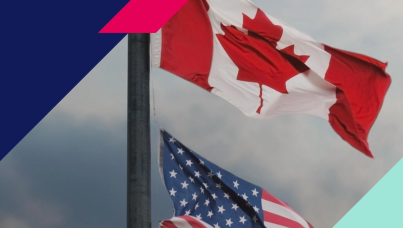Long Distance (71%) Top Choice to Keep In Touch With Friends at a Distance - If No Charge
Asked to choose what they would do if they no longer had to pay long-distance bills, half (51%) of Canadians indicated they would `save' the extra cash, while one quarter (25%) say they would spend it `socializing with friends'. This compares to one in ten (12%) who indicate they would `spend it on clothes', while one in twenty (5% - 4% regular beer drinkers and 1% regular non-beer drinkers) say they would `buy more beer'. Interestingly, among Canadians who drink beer on a regular basis (23%), sixteen percent opt for `buying more beer' and one third (32%) say they would spend the extra money `socializing with friends'.
Seven in ten (70%) Canadians indicate that on a monthly basis they spend between zero and $10 (35%) or between $11 and $30 (35%) on long-distance telephone service. This compares to 29% who report that their average month long-distance total is over $30 per month. There is no significant difference in the long-distance spending between regular beer drinkers and non-beer drinkers. Among the sub-group of regular beer drinkers, 35% report to spend on average between zero and $10 per month, while an equivalent number (37%) indicate that their average bill is between $11 and $30 per month. One quarter (27%) say that their average monthly long-distance bill is over $30 per month.
These are the findings of an Ipsos-Reid poll conducted on behalf of Labatt Breweries of Canada. between June 18th and June 20th, 2002. The poll is based on a randomly selected sample of 1,000 adult Canadians. With a sample of this size, the results are considered accurate to within 177 3.1 percentage points, 19 times out of 20, of what they would have been had the entire adult Canadian population been polled. The margin of error will be larger within regions and for other sub-groupings of the survey population. These data were statistically weighted to ensure the sample's regional and age/sex composition reflects that of the actual Canadian population according to the 1996 Census data.
Seven in ten (71%) Canadians say that if it were free, long-distance telephone calls would be their preferred mode of communicating with out of town friends. This compares to the number who would choose email (23%), regular mail (3%) or a pager/instant messaging (3%).
- Regionally, residents of Manitoba and Saskatchewan (84%) are the most likely to choose long-distance calls over the other options, while those in Quebec (65%) are the least likely to select this option. There are no significant differences in the selection of long-distance among age, gender, or income groups.
- Email is more likely to be the option of middle aged (27%) than older (18%) Canadians. This is also the case of Canadians in middle (26%) or upper (24%) income households compared to those in lower income households (16%).
- Regular mail is more likely the choice of women (4% versus 1% of men) and lower (8%) or middle (2%) income households than upper income households (0%).
- A higher proportion of 18 to 34 year olds (5%) than those 35 years of age or older (1%) select paging or instant messaging as their preferred mode of communication if it were free. Men (4% versus 1%) of women are also more likely to make this choice.
Asked what they would do if they no longer had to pay long-distance bills, half (51%) of Canadians indicate they would `save' the extra money, while one quarter (25%) say they would spend the money `socializing with friends'. This compares to one in ten (12%) who indicate they would `spend it on clothes', while one in twenty (5% - 4% regular beer drinkers and 1% of regular non-beer drinkers) say they would `buy more beer'.
- Regionally, residents of Ontario (59%), Alberta (58%) and British Columbia (53%) are the most likely to indicate they would `save' any extra money they would have if they no longer had to pay long-distance bills. Followed by those in Saskatchewan/Manitoba (45%), Atlantic Canada (41%) and Quebec (39%).
- Middle aged (55% versus 47% of younger) Canadians and the highest income households (54% compared to 41% of those in the lowest income households) are more likely to indicate they would `save' any additional money under this scenario.
- Spending the additional cash on `clothes' is more likely the choice of those in lower (19%) and middle (14%) income households than those from upper income households (6%).
- `Purchasing more beer' is more likely the choice of men (8% versus 1% of women) and Canadians 18 to 34 (8% versus 35 to 54 year olds 4% or 55+ 3%).
Interestingly, among Canadians who drink beer on a regular basis (23%), sixteen percent opt for `buying more beer' and one third (32%) say they would spend the extra money `socializing with friends'.
- Men (35% versus 11% of women); younger (32%) and middle aged (21%) Canadians compared to older (14%) Canadians; and those in middle (23%) and upper (29%) income households versus those in lower income households (15%); are more likely to indicate they drink beer on a regular basis.
Seven in ten (70%) Canadians indicate that on a monthly basis they spend between zero and $10 (35%) or between $11 and $30 (35%) on long-distance telephone service. This compares to 29% who say that their month long-distance average is over $30 per month.
- Among the sub-group of regular beer drinkers, 35% spend on average between zero and $10 per month, while an equivalent number (37%) indicate that their average bill is between $11 and $30 per month. One - quarter (27%) say that their average long-distance bill is over $30 per month.
-30-
For more information on this news release, please contact:
John Wright
Senior Vice-President
Ipsos-Reid Public Affairs
(416) 324-2900



